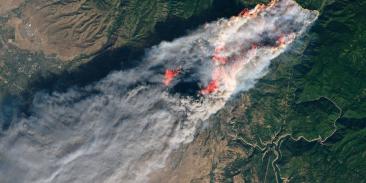Environmental Justice Air Quality Monitoring Act is a Step Toward Helping Communities Tackle Longstanding Inequities
EDF statement of Sarah Vogel, Senior Vice President of Health
“Every community should live free of the burden of harmful air pollution. With the introduction of the Environmental Justice Air Quality Monitoring Act, Senator Markey is recognizing many do not, especially Black, Asian-American, Latino and Indigenous communities that bear the unequal health burden of air pollution, and the need for hyperlocal air quality monitoring.
“Research shows that levels of air pollution can vary widely by city block, with major health consequences. This is compounded in communities of color, with Black, Asian-American, Latino and Indigenous families especially breathing more air pollution than white families because they are more likely to live near highways, refineries, ports and other sources of harmful pollution. For example, EDF’s recent study found that San Francisco Bay Area neighborhoods with higher percentages of people of color experienced double the rate of childhood asthma from traffic-related pollution than neighborhoods that are predominantly white. Unfortunately, the current system of national monitoring misses these important differences within and across neighborhoods.
“While measuring pollution alone won’t resolve inequities, this data can support local communities on further actions to confront air pollution and inform federal investments where they will have the largest benefits to health and equity.”
• Sarah Vogel, Senior Vice President of Health, Environmental Defense Fund.
Additional Background:
The Environmental Justice Air Quality Monitoring Act of 2021 would direct $100m a year to hyperlocal air quality monitoring. It would enable monitoring of criteria air pollutants, hazardous air pollutants, and greenhouses gases at a neighborhood scale, in order to identify persistent elevated levels of air pollutants in environmental justice communities.* The funded projects would generate hyperlocal maps of air pollution and demographic characteristics, providing data to community residents and local, state, Tribal and federal air pollution managers.
EDF is using scientific research and local emissions data to improve health where you live. Learn more about this work here.
* The term “environmental justice community,” as defined in the Act means “a community with significant representation of communities of color, low-income communities, or Tribal and Indigenous communities that experiences, or is at risk of experiencing, higher or more adverse human health or environmental effects, as compared to other communities.”
With more than 3 million members, Environmental Defense Fund creates transformational solutions to the most serious environmental problems. To do so, EDF links science, economics, law, and innovative private-sector partnerships to turn solutions into action. edf.org
Media Contact
Latest press releases
-
Colorado Air Regulators Approve Landfill Methane Standards
December 18, 2025 -
Proposal Would Guarantee Public Access to Air Quality Data
December 18, 2025 -
New Bill Will Help Keep Domestic Manufacturers Competitive
December 17, 2025 -
Satellite Data Shows Colorado Oil & Gas Methane Emissions Dropped as State Rules Took Effect
December 17, 2025 -
EDF Europe: Energy Council Signals Shift to Delivery on EU Methane Regulation
December 17, 2025 -
Trump Administration Forces Washington’s Last Coal Plant to Stay Open Past Retirement, Needlessly Driving up Electricity Bills and Harming Health
December 17, 2025











